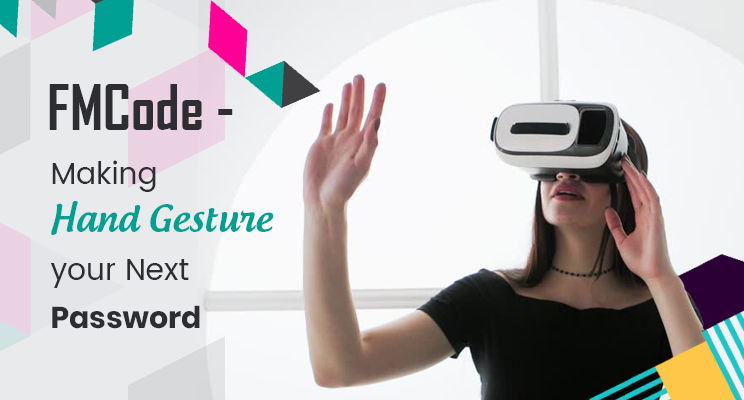Imagine just making a hand gesture to sign-in or unlocking something, instead of biometric-based features like fingerprints and facial recognition.
The future isn’t too far when instead of fingerprints or facial recognition, gesture-based passwords would be enough to sign in or unlocking your device.
A new system named FMCode was described in a paper at Arizona State University by computer scientists Duo Lu and Dijiang Huang that will capture a person’s finger making a motion in the air as an authentication of the user’s identity using a wearable sensor or camera.
It was claimed in the paper that the algorithms used by this new gesture-based authentication can correctly identify users 94.3-96.7% of the time after seeing the pattern (a signature or a shape) just a few times.
Moreover, the researchers say that FMCode will be very easy to use and doesn’t require much training.
Advantages
As described in the paper by the researchers Duo Lu and Dijiang Huang, FMCode is an attempt to elude the complicated privacy concerns related to biometric-based unlockings like fingerprints and facial recognition.
Additionally, FMCode relieves you from remembering a long array of characters used in a traditional password.
Gesture passwords are the next future and they can be handy in various scenarios.
Also Read: How Technology is Changing Healthcare Industry
Challenges
Like every new technology, FMCode too has its faults and flaws.
Unlike passwords, hand/finger gestures made in the air can’t be exactly the same each time. To recognize the correctly, the FMCode need to be robust enough to identify slightly different speeds and shapes simultaneously capable to identify any fraudulent attempts.
To overcome the challenge, the computer scientists used machine learning and built a convolutional neural network (CNN) that allow FMCode to find spoofs while identifying minor variations in the motion signals from the real user. This also limits the amount of training, FMCode needs to setup gestures as passwords.
Also Read: 5 Best Tips to Find the Right Offshore Development Team for your Project
Robustness
As for now, the FMCode securely judge most of the fraudulent guessing attempts, even the one when an attacker exactly knows the gesture.
However, the FMCode still needs to be more robust. As per the researchers, the future planning for FMCode includes recognizing attacks where a gesture is recorded and replayed later to trick the system, making the system more secure against any type of security breach.
Uses
It is yet to be seen if people will be interested in gesture passwords any time soon or not.
The participants who tested the FMCode found the system to be high on security but lagging in ease-of-use and speed as compared to the traditional methods.
However, a gesture-based touch-free interface can successfully be implemented in Augmented Reality (AR) and Virtual Reality 9VR) applications or in a situation where minimum contact with surroundings is required, like for cleanliness in operation theatres.
Conclusion
With sci-fi movies like Minority Report and Iron Man showing futuristic interactions, the interest in and development of the technology has hugely increased over the years.
While tech giants like Facebook, Microsoft, and Magic Leap are guaranteeing the need for gesture control in their VR and AR environments, companies like Sony are looking to turn gesture interfaces into reality.
Back in 1989 when Nintendo released a wired glove that could control some gaming aspects to 2013 when Leap Motion was launched, hand gestures have always fascinated the developers as well as the users.
Let’s Contact: WeDigTech – Mobile App Development company for any query related to the digital solution that you are looking to build for your business.
Also Read: Importance of developing a mobile app for your business in today’s world












